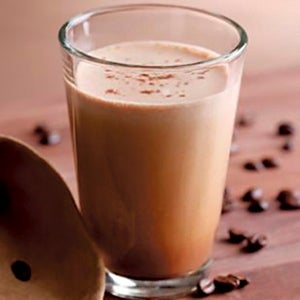Fair trade: Products with a purpose
Published 7:01 am Sunday, April 17, 2016
A lot of people wonder about Fair Trade. What is it and does it really make a difference?
Fair trade is best described as a movement to help producers in developing countries get a fair price for their products, reducing poverty, providing for the ethical treatment of workers and farmers, and promoting environmentally sustainable practices.
“Trading of ethically produced handmade goods is based on an idea that sits at the heart of fair trade: relationships matter,” writes Rene Bowers, executive director of the Fair Trade Federation. “The connection-based structure of fair trade developed from the work of a few innovators who had a vision to alleviate poverty through the sale of traditional crafts. At this vision’s core was (and still is) the idea that trade should involve a true partnership between buyer and seller—one that empowers producers, builds their capacity to do business, and improves the quality of life for their communities.”
Hy-Vee believes in that concept as well — making a difference in someone’s life even if they are thousands of miles away. Hy-Vee grocery stores do that through sales of Fair Trade chocolate, coffee and other products. You can easily identify those products by the Fair Trade logo on the front of products.
The fair trade movement began in 1946 when Edna Ruth Byler, a volunteer for the Mennonite Central Committee, visited a sewing class in Puerto Rico. She discovered that despite the hard work of the local women, and their extraordinary talent for producing handmade lace and other fabrics, they still lived in tremendous poverty.
Byler had the idea to carry these pieces back to the United States and sell them to American shoppers, returning the profits directly to the women producers. Her work eventually became more structured and led to the formation of Self Help Crafts. The organization, now known as Ten Thousand Villages, opened its first fair trade shop in 1958 — eventually expanding into Canada in the 1960s — and is now the largest fair trade retailer in North America.
In its Caribou coffee shops, Hy-Vee offers holiday merchandise that was handcrafted in Kathmandu, Nepal, helping those artisans, by selling brightly colored wool felt animals.
Fair trade chocolates are all over the chocolate aisles at Hy-Vee and include Theo Organic Fair Trade; Pascha Organic, a product of Peru; Lily’s Dark Chocolate (Stevia Sweetened), Endangered Species Chocolate, Taza Chocolates Mexicano and Green & Black’s Organic, just to name a few.
The Endangered Species Chocolate urges consumers to “indulge in a cause” as 10 percent of net profits are donated to nonprofit partners that protect and preserve wild life. Taza chocolates are “direct” trade certified, cultivating direct relationships with growers and paying a premium over the Fair Trade price.
Hy-Vee also offers fair trade yellowfin tuna in its seafood departments.
Above is a recipe to get you started using Fair Trade coffee.

Eating Well Frozen Mochaccino
Eating Well Frozen Mochaccino
Serves 2 (about 1 1/3 cups each)
All you need
•1 cup double-strength brewed coffee or espresso (see Tip)
•1 cup Hy-Vee low-fat milk
•2 tbsp unsweetened natural cocoa powder (not Dutch-process), plus more for sprinkling
•2 to 3 tbsp pure maple syrup
•1/8 tsp vanilla extract
•1 or 2 ice cubes, if needed
All you do
1. Freeze coffee in an ice cube tray until firm, at least 4 hours or overnight.
2. Combine the frozen coffee cubes, milk, cocoa, maple syrup to taste and vanilla in a blender. Pulse until smooth, adding plain ice cubes if you want it thicker or a little water if you want it thinner.
3. Divide between 2 glasses, dust with a little cocoa powder, if desired, and serve immediately.
Tip: Double-strength coffee or espresso gives you the best coffee flavor when making blended or iced coffee drinks. If the coffee isn’t strong enough, the drink will taste watered-down. To brew double-strength coffee, use twice the amount of grounds as you normally would for a regular cup of coffee. Espresso is strong enough brewed regularly.
Source: EatingWell
This information is not intended as medical advice. Please consult a medical professional for individual advice.


